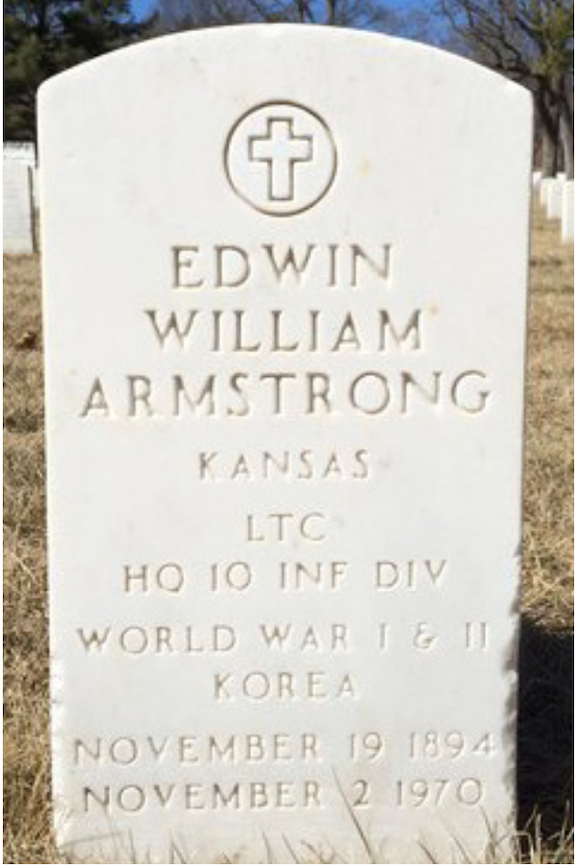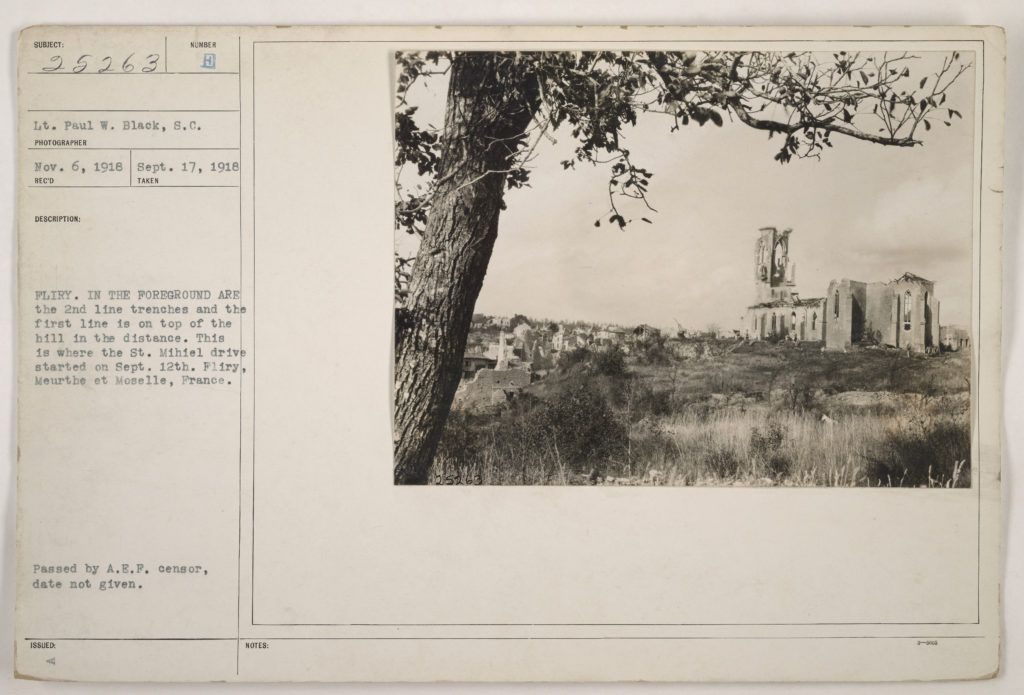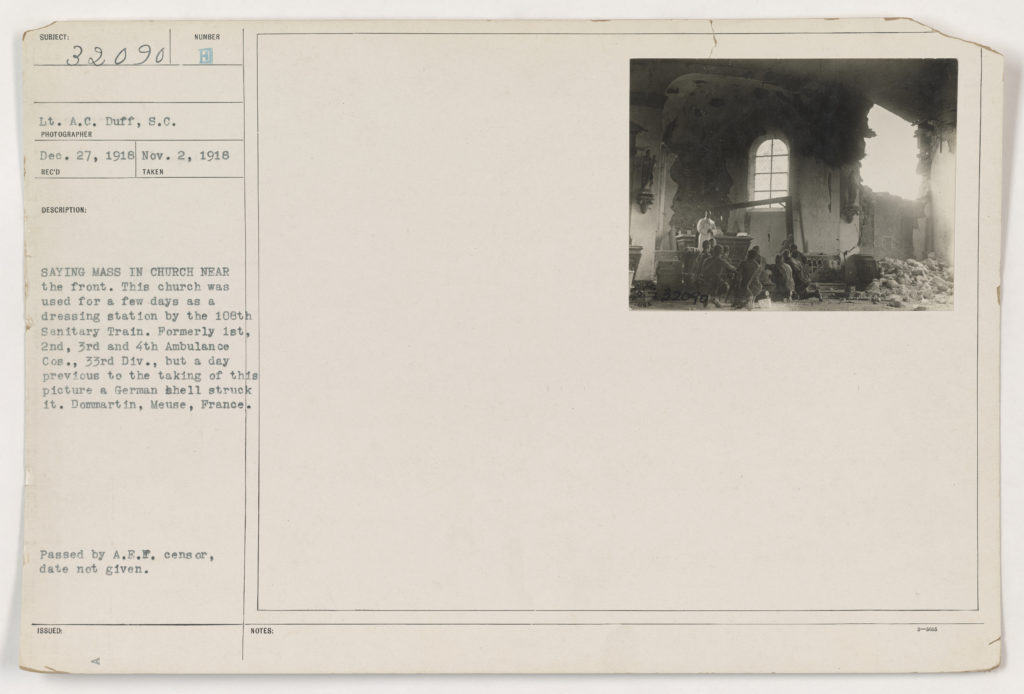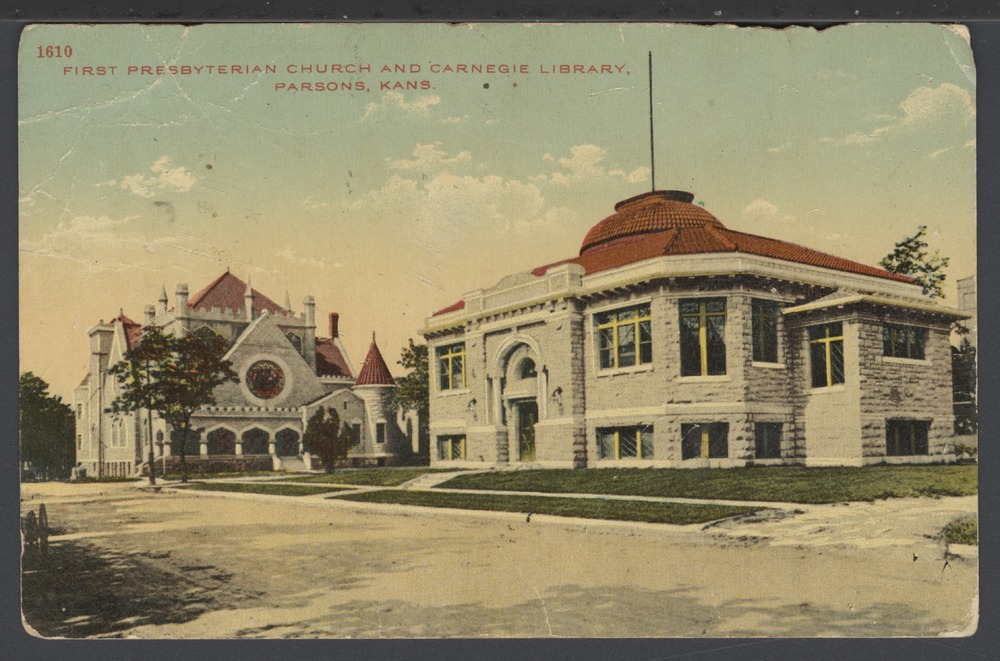Lieutenant Colonel Edwin William Armstrong

- Unit: 89th Division, 346th Infantry Regiment, Company K
- Date of Birth: November 19, 1894
- Entered the Military: February 8, 1918
- Date of Death: November 2, 9170
- Hometown: Hiawatha, Kansas
- Award(s): Bronze Star with Oak Leaf Cluster
- Cemetery: Site 3133, Plot M. Fort Leavenworth National Cemetery, Fort Leavenworth, Kansas
Seaman Middle School
2017–2018
Before the War
On November 19, 1894, Edwin William Armstrong was born in Atchison, Kansas, the eldest son of Thomas and Estella Armstrong. His father was a farmer and Armstrong worked on the family farm. After graduating from Atchison High School, Armstrong attended the College of Emporia. In his enlistment records, he indicated that his hobbies included fishing and golf.

Military Experience
Enlistment and Training
In February 1918 Armstrong enlisted in the U.S. Army. He served as a private in Company K of the 356th Infantry Regiment, 89th Division. The 356th Infantry Regiment was organized at Camp Funston, Kansas on September 5, 1917. After nine months of training, the 89th Division embarked for France. Company K set sail on the SS Carolina on June 3, 1918, and landed in Le Havre, France, on June 21. After six weeks of intensive training in the Lucey sector, the 356th Infantry Regiment was on the move toward its first major action of the war.
Saint Mihiel Salient
According to the official history of Company K, “Right in front of Metz was this Saint Mihiel Salient which had to be crushed out in order to straighten the American battle line, so that we could start on the final phase of the war which was the Meuse-Argonne Offensive.” On September 12, men of the 356th Infantry Regiment went “over the top” near the towns of Flirey and Bois de Jury in one of the first great all-American drives in World War I.
The official history notes the work of chaplains in comforting the troops during the ordeals of battle. Perhaps the care shown by the military chaplain in his company contributed to Armstrong’s decision to attend seminary after the war and later become a military chaplain himself.
After successfully taking and holding the Jaulny sector outside of Metz, the 356th Infantry Regiment was relieved by the 37th Division on October 9.
Meuse-Argonne Offensive
Ordered back to the front as part of the Meuse-Argonne Offensive, the 356th Infantry Regiment was directed to cut the German lines of communication along the Meuse River. Doing so would cut off the supplies of half the German Army and potentially force that portion of the army to surrender.
To sever the communication lines, the 356th Infantry Regiment needed to capture the Heights of Barricort. Slow advancement behind an artillery barrage brought Company K to its objective and in sight of the Meuse River on November 6.
Armstrong suffered from a German gas attack on November 9, 1918, just two days before the Armistice was signed, ending World War I. According to after actions reports, the “interest taken in the welfare of the company [K] by its personnel has caused it to be continually rated as the best in the battalion.”
Between the Wars
Upon returning home at the end of the World War I, Armstrong married Alice Willmeth on June 8, 1921 and they had three daughters. He attended Lane Theological Seminary in Cincinnati, Ohio. In 1926 he was ordained and became the pastor of Woodland Heights Presbyterian Church where he served for four years before becoming pastor at First Presbyterian Church in Parsons, Kansas. He led the church for the next twenty years.
On February 21, 1928, Armstrong was appointed as a chaplain in the Officers’ Reserve Corps. Four years later in 1932, he spent two weeks of active duty at Fort Riley learning under the instruction of Chaplain Perry O. Wilcox. Armstrong reported his training to be a “most profitable time.” He also stated,
“I feel that I have a little better knowledge of the place and duties of a Chaplain with troops. I had the opportunity of observing and participating in a military funeral, an overnight hike with troops, and the Chapel services… Because of my pleasant two weeks at Fort Riley, I sincerely hope that I can have two weeks of active duty again next year.”
These periods of training would prepare Armstrong for his continued service as a military chaplain during World War II.
World War II
With the threat of war looming, Armstrong re-enlisted in the U.S. Army on January 5, 1938. In 1940 he was authorized for extended active duty and in April 1941 was ordered to active duty. Armstrong served at Fort Leavenworth, Kansas, Fort Leonard Wood, Missouri, and the 27th General Hospital in San Francisco, California during World War II. Armstrong ministered to the wounded and dying, conducted services and led worship, and provided pastoral care and counseling. On his evaluation records at the conclusion of the war he is noted as “a very fine man.”



Veteran Experience
After World War II
After World War II, Armstrong returned to Parsons, Kansas, where he resumed his work as pastor at First Presbyterian Church. He was active in the community as president of the Parsons Ministerial Organization, president of the local Rotary Club, and a member of the Masons, Parent Teacher Association, Young Men’s Christian Association, and the Red Cross. He received high honors such a place on the Governor’s Council of World Affairs and also was named a member of the Board of Trustees for the College of Emporia.

Commemoration
Edwin William Armstrong passed away on November 2, 1970 at the age of 75 and is buried at Fort Leavenworth National Cemetery in Fort Leavenworth, Kansas.
A letter from Office of the Chief of Chaplains to Armstrong stated, “Sound and vigorous spirituality in thought and action is the only sure foundation for real patriotism and personal peace and happiness.” Edwin W. Armstrong’s unwavering patriotism was the foundation of his many years of service to his country as a private in World War I and as an army chaplain in the years following.

Bibliography
Atchison Daily Globe. “Edwin William Armstrong.” November 3, 1970.
Black, Lieutenant Paul W. Fliry. In the foreground are the 2nd line trenches…Flry, Meurthe et Moselle, France. Photograph. September 17, 1918. National Archives and Records Administration (111-SC-25263). Image.
Baldwin, Sara Mullen and Robert Morton Baldwin. “Armstrong, Edwin William Reverend.” Genealogy Trails History Group. 2006. Accessed November 25, 2018. genealogytrails.com/kan/labette/bios1.html.
Duff, Lieutenant A.C. Saying mass in church near the front…Dommartin, Meuse, France. Photograph. November 2, 1918. National Archives and Records Administration (111-SC-32090). Image.
Edwin Armstrong, Official Military Personnel File, Department of the Army, RG 319, National Archives and Records Administration — St. Louis.
Records of the American Expeditionary Forces, World War I, General Headquarters, Record Group 120 (Box 2529); National Archives at College Park, College Park, MD.
Records of the American Expeditionary Forces, World War I, Record of Combat Division 1918–1919, Record Group 120 (Box 1); National Archives at College Park, College Park, MD.
Records of the American Expeditionary Forces, World War I, Record of Combat Division 1918–1919, Record Group 120 (Box 35); National Archives at College Park, College Park, MD.
Records of the Office of the Chief Signal Officer, Military History 1860–1938, Record Group 111-SC (Box 892); National Archives at College Park, College Park, MD.
Records of the Office of the Chief Signal Officer, Military History 1860–1938, Record Group 111-SC (Box 893); National Archives at College Park, College Park, MD.
Schley, Walter. Edwin William Armstrong grave photograph, Fort Leavenworth National Cemetery. Find a Grave. Last updated March 28, 2015. Accessed February 5, 2019. www.findagrave.com/memorial/296554/edwin-william-armstrong.
S.H. Kress & Company. First Presbyterian Church and Carnegie Library in Parsons, Kansas. Postcard. February 25, 1912. Kansas Historical Society (255704). Image.
Trabold, Private E. Gassed patients of 82nd and 89th Divisions…Royaumeix, France. Photograph. 1918. National Archives and Records Administration (111-SC-22012). Image.
View of Atchison. Photograph. c. 1880–1900. Kansas Historical Society (210449). https://www.kansasmemory.org/item/210449.
World War History of Company “K” 356th Infantry 89th Division. Treves: The “Paulinus-Druckerei,” 1919. National World War I Museum and Memorial. http://cdm.sos.mo.gov/cdm/ref/collection/wwiuh/id/6246.

